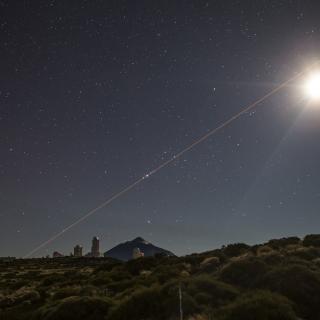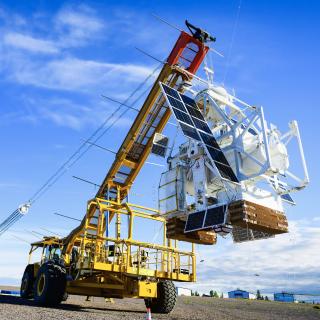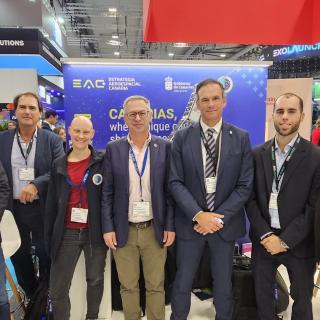It may interest you
-
 The Instituto de Astrofísica de Canarias is designing and developing, as ordered by the Spanish company Thales Alenia Space , the adaptive optics which will be a parto f the ground station for the GARBO project, the first Spanish geostationary system for distributing quantum keys by satellite. This is a decisive step in the field of secure quantum communication on a large scale, and will strengthn the position of Spain, and of Europe at the Forefront of this technology. Within the framework of the project the IAC will lead the development of the adaptive optics systems, and will participateAdvertised on
The Instituto de Astrofísica de Canarias is designing and developing, as ordered by the Spanish company Thales Alenia Space , the adaptive optics which will be a parto f the ground station for the GARBO project, the first Spanish geostationary system for distributing quantum keys by satellite. This is a decisive step in the field of secure quantum communication on a large scale, and will strengthn the position of Spain, and of Europe at the Forefront of this technology. Within the framework of the project the IAC will lead the development of the adaptive optics systems, and will participateAdvertised on -
 At the present time ground-based observatories have a wide range of instruments which can study the solar surface in the visible and infrared ranges. But it is not possible to combine these observations with those in the near ultraviolet, which cover the wavelength range from 200 to 400 nanometres, nor to maintain them for long periods due to the turbulence in the Earth’s atmosphere. In this context, the Sunrise III mission, in which the Instituto de Astrofísica de Canarias (IAC) is collaborating, “ has become the first observatory to obtain spectropolarimetric data simultaneously in theAdvertised on
At the present time ground-based observatories have a wide range of instruments which can study the solar surface in the visible and infrared ranges. But it is not possible to combine these observations with those in the near ultraviolet, which cover the wavelength range from 200 to 400 nanometres, nor to maintain them for long periods due to the turbulence in the Earth’s atmosphere. In this context, the Sunrise III mission, in which the Instituto de Astrofísica de Canarias (IAC) is collaborating, “ has become the first observatory to obtain spectropolarimetric data simultaneously in theAdvertised on -
 The Instituto de Astrofísica de Canarias (IAC), through IACTEC-Space, is participating this week in Space Tech Expo Europe, the largest space industry trade fair on the continent, held in Bremen from November 18 to 20. The team is located in the Spain Space pavilion, alongside the Canary Islands Aerospace Strategy (EAC), to showcase the technological developments of the CELESTE laboratories and strengthen international collaborations in the space sector. The I nstituto de Astrofísica de Canarias (IAC) is participating once again in Space Tech Expo Europe, the leading event for the spaceAdvertised on
The Instituto de Astrofísica de Canarias (IAC), through IACTEC-Space, is participating this week in Space Tech Expo Europe, the largest space industry trade fair on the continent, held in Bremen from November 18 to 20. The team is located in the Spain Space pavilion, alongside the Canary Islands Aerospace Strategy (EAC), to showcase the technological developments of the CELESTE laboratories and strengthen international collaborations in the space sector. The I nstituto de Astrofísica de Canarias (IAC) is participating once again in Space Tech Expo Europe, the leading event for the spaceAdvertised on